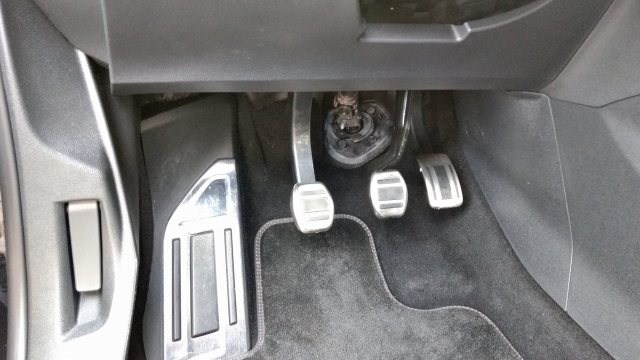What is a “reinforced clutch” and what is it used for? Let’s take a look at what makes the clutch stronger and what gets better.
What is a “clutch” in the first place?
The “clutch” is a part of the “power transmission device” that transmits the output of the engine to the mission.
Many manual transmissions use a method called a dry multi-plate clutch, '' in which a clutch cover ” that transmits the rotation output from the engine via a flywheel is crimped to a “ clutch disc ” on the transmission side, The rotation generated by the engine is transmitted to the mission using the pressure and friction.
This is the state where the clutch is engaged, but when the driver depresses the clutch pedal in the driver’s seat, the crimping is released, and the state where the engine power is not transmitted to anywhere.
The clutch is attached besides MT
Automatic vehicles also have clutches, and there are methods such as a torque converter, a type of fluid clutch, an electromagnetic clutch that automatically connects and disconnects, and a system in which the same multi-plate clutch as the MT is automatically operated by hydraulic pressure, but except for trucks etc. There is no manual operation by the driver.
Why connect and disconnect the clutch?
There are two main reasons for disconnect the clutch: “Because of the structure of the MT, it is difficult to change gears while transmitting power, and it is easier to disengage the clutch and disengage the power.” That is the biggest reason.
However, there is another important reason: “If the gear is connect other than N while the clutch is engaged when starting the engine, there is a risk of runaway with the momentum started”. Therefore, the correct method for starting an MT car is to “disengage the clutch, move the shift lever to the left or right, and check that no gear other than N is engaged before starting the engine.”
What does the “enhanced clutch” strengthen?
Even with the clutch engaged, I’m actually skating little by little with minimal loss. Conversely, even when the clutch is disengaged, the clutch is slipping with minimal friction. Furthermore, since the engine does not stall at the start, a “semi-clutch” that slips the clutch intentionally is performed, and the clutch wears little by little as it keeps slipping. When the wear reaches its limit, power cannot be transmitted, and parts such as clutch discs need to be replaced.
Most cars have enough clutch capacity to be able to accept even if you step on the accelerator, but running on sports, increasing engine power, wearing extremely high grip tires eliminates slip loss, and from the road surface In some cases, the load on the clutch may increase, such as an increase in the number of inputs. In that case, first, the clutch becomes slippery, and the life is extremely shortened.
Second, the power from the engine cannot be completely transmitted. What’s more, when you lose the engine power and tire grip and engage the clutch, it can suddenly break. To avoid this, increase the clutch friction and crimping force according to the running conditions and tuning, and increase the clutch capacity. This is the “enhanced clutch”.
How to strengthen the clutch
In general, replace the clutch disc with a higher friction material with a higher friction force and a clutch cover with a higher crimping force to increase the capacity of the clutch. in many cases, the friction material mixed with metal powder and fiber is replaced with a disc using metal or carbon friction material with higher frictional force.
In addition, with high power, the required frictional force cannot be obtained with a single clutch disc, and there are clutches such as the “Twin Plate” and “Triple Plate” with an increased number of discs. If you apply the necessary crimping force to this, this time the crimping force is too strong and the clutch pedal becomes very heavy, and it may be difficult to disengage the clutch, so parts that support the pedaling force of the clutch pedal are also sold.
Clutch reinforcement doesn’t always extend life
The primary purpose of strengthening the clutch is to “transmit the output from the engine without wasting it and achieve high performance when required.” Note that the life of the clutch is not always extended.
Carbon clutches, which have been increasing recently, are lightweight and excellent in abrasion resistance in spite of the increased capacity, but due to their characteristics, they have the disadvantage that their frictional force drops at low temperatures and they are very expensive compared to other materials.
“Strengthening the clutch” also means that the clutch can withstand engine output and road input. While there is the merit that the power transmission loss of the clutch approaches zero, the weakest part other than the clutch is stressed this time.
As a result, the drive shaft and propeller shaft may be broken, the mission and the differential may be destroyed, and the worst engine blow may occur. Tuning is also a weird pretend that “If you strengthen somewhere, stress will always accumulate in other weak parts”, so let’s enjoy while paying attention to the balance.



